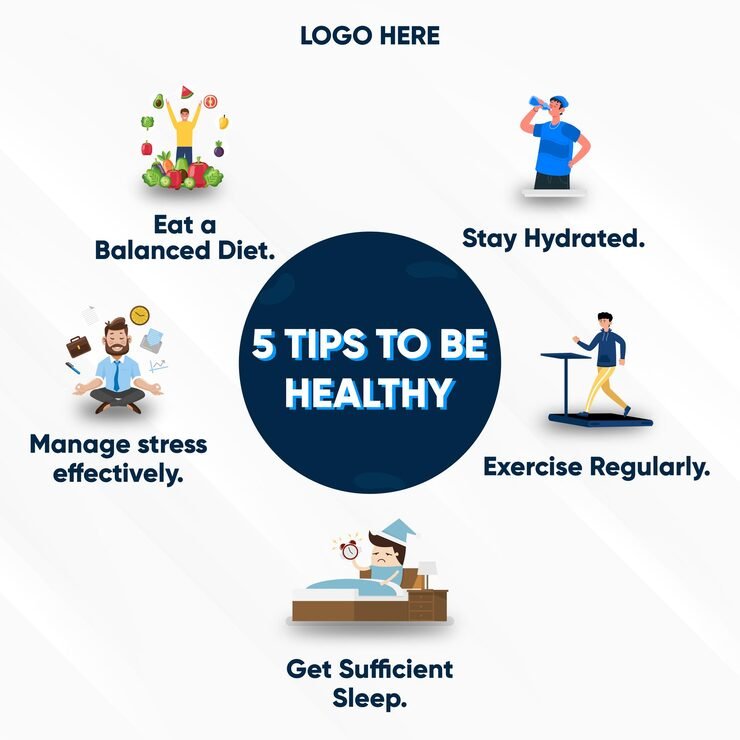Table of Contents
- Introduction
- What Is the Health Triangle?
- The Three Sides of the Health Triangle
- 3.1 Physical Health
- 3.2 Mental & Emotional Health
- 3.3 Social Health
- 3.1 Physical Health
- Why the Health Triangle Matters in the USA
- Signs Your Health Triangle Is Unbalanced
- How to Strengthen Each Side of the Health Triangle
- 6.1 Building Physical Health
- 6.2 Boosting Mental & Emotional Health
- 6.3 Improving Social Health
- 6.1 Building Physical Health
- Modern Applications: Iron Triangle of Health Care & Women’s Health
- Health Triangle for Teens, Adults & Seniors
- Practical Daily Habits to Balance Your Health Triangle
- Conclusion
- Top 5 FAQs
1. Introduction
Health isn’t solely about consuming the right foods or avoiding illness, it’s about finding balance in mind, body, as well as relationships. The U.S., where fast-paced lifestyles, stress levels, and health challenges are typical, knowing what is known as the Health Triangle is essential.
The health triangle demonstrates that mental/physical health, as well as social health need to work in tandem. If one part is weaker then overall wellbeing suffers. This article explains the concept and explains the reasons why it is important and provides you with actionable strategies to keep your health triangular well-balanced.

2. What Is the Health Triangle?
The triangle of health (sometimes known as”the health triangle) is a basic model of health that focuses on three equally sized parts:
- Your physical health is how your body is functioning.
- Mental and emotional health The way you feel, think and deal with stress.
- Social health refers to the quality of your relationships as well as the support systems.
If all three sides are healthy the triangle is balanced and you can enjoy the highest level of health. If one of the sides is not taken care of (like the mental state) the triangle will become uneven, which negatively impacts the other sides.
3. The Three Sides of the Health Triangle
3.1 Physical Health
This covers everything that is connected to the body such as fitness, nutrition and sleep. It also includes hygiene, hygiene and preventive medical care. Healthful physical fitness lowers the risk of developing chronic illness, increases the energy level, and enhances the living quality.
Essential practices for physical fitness:
- Exercise 150 minutes per week.
- Consume a balanced and balanced diet that is based on whole food items.
- Make sure you drink enough water.
- Sleep for 7-9 hours every night.
- Schedule routine checkups.
3.2 Mental & Emotional Health
Mental health includes the mind, emotions and coping skills. Stress and anxiety as well as negative self-talk can affect mental health, and can even affect physical health.
Strategies to improve mental health
- Do some mindfulness and meditation.
- Write down your journal of reflection or gratitude.
- Refrain from negative self-talk by using affirmations.
- Get counseling or therapy when you need to.
3.3 Social Health
Humans thrive when they are connected. Social health is the result of relationships with family members, friendships communications, and involvement in the community. Social health issues can cause anxiety and isolation, both of which can affect physical and mental health.
Actions to improve health and wellbeing of the population:
- Maintain relationships with family and with your friends.
- Join clubs or community groups.
- Give back or volunteer.
- Build healthy skills for communication.

4. Why the Health Triangle Matters in the USA
The U.S., chronic conditions stress, anxiety as well as social isolation, are on the rise. Studies show:
- 1 out of five U.S. adults experiences mental disease every year.
- Diabetes and heart disease impact millions of people.
- Being lonely is now seen as a major health issue.
The health triangle assists people achieve balance as well as connecting to discussions about healthcare in general, such as that of Iron Triangle of Health Care (balancing costs accessibility, quality, and cost).
5. Signs Your Health Triangle Is Unbalanced
Your health triangle could be a bit off if you notice:
- Chronic fatigue or frequent illnesses (physical).
- Anxiety, stress or a low motivation (mental).
- Poor communication, isolation, or relationships that are strained (social).
Being aware of these warning signs early will allow you to restore balance before issues get out of hand.
6. How to Strengthen Each Side of the Health Triangle
6.1 Building Physical Health
- Regular exercise (even brief walks).
- Consume fruits, vegetables protein lean, whole grains.
- Drink plenty of water.
- Avoid processed foods such as sugar, alcohol, and even sweets.
- Make sure you have a medical check-up every year.
6.2 Boosting Mental & Emotional Health
- Try relaxing techniques like breath or yoga.
- Reduce stress by managing your time and self-care.
- Speak to your someone you trust or consult with a counselor if you feel overwhelmed.
- Avoid relationships and environments that are toxic.
6.3 Improving Social Health
- Contact family members or friends from the past.
- Participate in local events, as well as join interests-based group.
- Develop active listening skills and develop empathy.
- Blend online interactions with face-to-face connections.
7. Modern Applications: Iron Triangle of Health Care & Women’s Health
The Iron Triangle of Health Care is an U.S. policy model that is focused on balancing quality, cost access, and cost in the field of healthcare. Like the health triangle if any one aspect is emphasized too much (like costs that are low) other elements (like access or quality) might suffer.
In addition, organizations such as Triangle Premier Women’s Health highlight the ways that specialized care can be applied to the health triangle principle. Women’s health typically requires an optimum balance of physical therapy, mental health services as well as social and community resources.
8. Health Triangle for Teens, Adults & Seniors
- Teens often neglect their mental health because of peer pressure and academics. Resilience building early can prevent the possibility of future problems.
- Adults are often struggling to balance work, relationships and health. The management of stress is vital.
- Seniors can be vulnerable to loneliness and chronic illnesses. Social interaction and preventive health are crucial.
9. Practical Daily Habits to Balance Your Health Triangle
- Healthy breakfast and morning exercise.
- Daily gratitude journaling.
- Every week, we make phone calls to our loved ones.
- Consistent sleep schedule.
- Beware of screen time and practice mindfulness.
Little daily actions make sure your triangle is balanced over the long term.
10. Conclusion
The triangle of health is much more than just a graph It’s a road map for living a life that is fully. By balancing mental, physical and social wellbeing, you can build a sense of resilience, avoid illnesses, and live your life with the intention of living.
The U.S., where healthcare issues and hectic lifestyles cause an imbalance understanding this model is an important first step. No matter if you’re a college student, an employee or an elderly person, enhancing your health triangle is a guarantee of lasting health.
11. Top 5 FAQs
1. What is the health triangle?
It’s a wellness program that includes three aspects of mental/emotional, physical, and health for social. Healthy sides translate to greater overall wellbeing.
2. What is the reason why the health triangle is crucial?
It demonstrates that well-being is multi-dimensional. Neglecting one aspect (like social relationships) could harm the two others.
3. How can you ensure that the health triangle well-balanced?
Through exercise, eating healthy and focusing on self-care. stress while maintaining healthy and positive relationships.
4. What is the Iron Triangle of Health Care?
A model for healthcare that balances costs, quality access, and cost which shows that enhancing one can affect the other.
5. What is Triangle Premier Women’s Health?
It’s a health practice that focuses on holistic women’s health and aligning on the three-dimensional health through treating mind, body and needs of the community.







